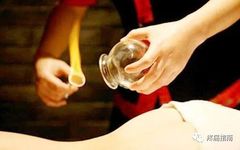According to the severity of the patient’s condition, cupping therapy can be divided into four techniques: Shan Gua (Flash Cupping), Zou Gua (Moving Cupping), Liú Gua (Retention Cupping), and Cì Luò Bà Guàn (Bloodletting Cupping).
● Flash Cupping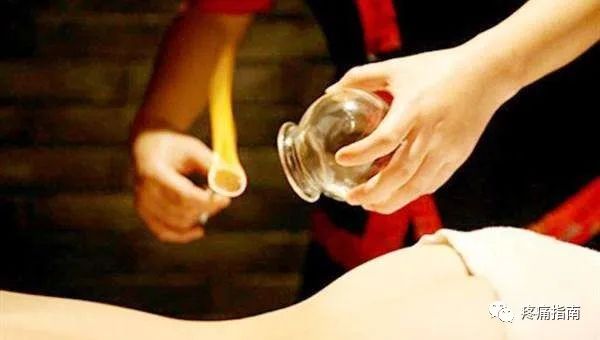 Steps❶ Wipe the area to be cupped with a cotton ball soaked in 75% alcohol.❷ Ignite a cotton ball soaked in 95% alcohol, quickly insert it into the glass cup, then immediately remove it and place the cup on the skin, then quickly lift it off.❸ Repeat the suction several times until the skin becomes red. Flash cupping usually does not leave marks on the skin and is the least irritating of the four techniques.● Moving CuppingSteps❶ Wipe the area to be cupped with a cotton ball soaked in 75% alcohol. Apply a lubricating substance or liquid on the skin surface where cupping is to be performed. The choice of lubricating substance varies based on the desired therapeutic effect. In this image, Zǐ Cǎo Yóu (Lithospermum Oil), which promotes blood circulation, is used.
Steps❶ Wipe the area to be cupped with a cotton ball soaked in 75% alcohol.❷ Ignite a cotton ball soaked in 95% alcohol, quickly insert it into the glass cup, then immediately remove it and place the cup on the skin, then quickly lift it off.❸ Repeat the suction several times until the skin becomes red. Flash cupping usually does not leave marks on the skin and is the least irritating of the four techniques.● Moving CuppingSteps❶ Wipe the area to be cupped with a cotton ball soaked in 75% alcohol. Apply a lubricating substance or liquid on the skin surface where cupping is to be performed. The choice of lubricating substance varies based on the desired therapeutic effect. In this image, Zǐ Cǎo Yóu (Lithospermum Oil), which promotes blood circulation, is used.
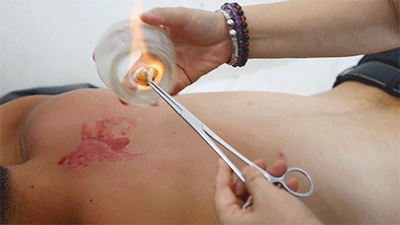
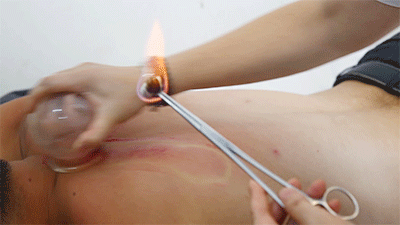
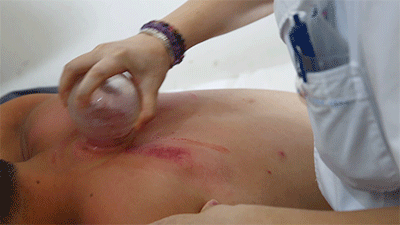
❷ Ignite a cotton ball soaked in 95% alcohol, quickly insert it into the glass cup, then immediately remove it and place the cup on the skin, holding the cup and moving it back and forth along the meridians. After moving cupping, if there are issues in the body, there will be large areas of Shā Hén (petechiae) at the cupping site; if there are no issues, it will generally just leave cup marks that will fade quickly.● Retention Cupping
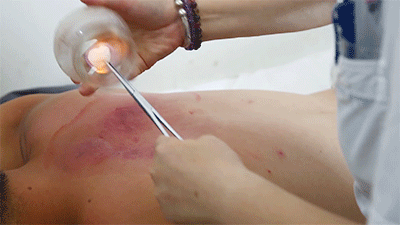
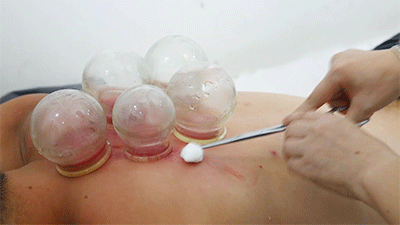
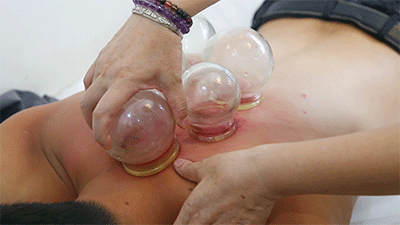
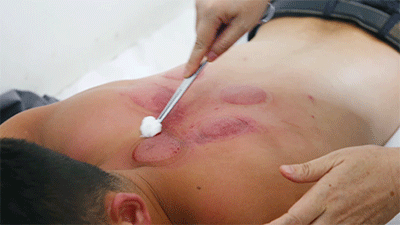
❶ Ignite a cotton ball soaked in 95% alcohol, quickly insert it into the glass cup, then immediately remove it and place the cup on the skin, leaving it for 10-15 minutes before removing it and wiping the skin clean with a cotton ball.● Bloodletting Cupping
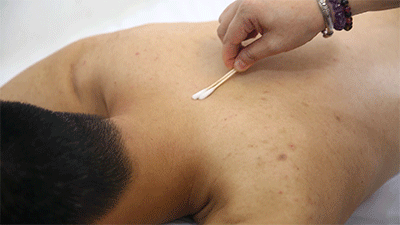
❶ Wipe the area to be cupped with a cotton ball soaked in 75% alcohol.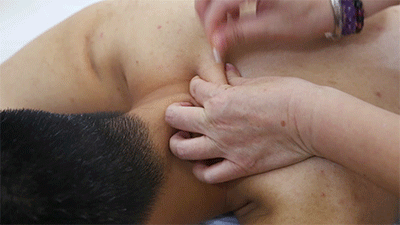 ❷ Use a disposable blood collection needle to prick the skin locally.
❷ Use a disposable blood collection needle to prick the skin locally.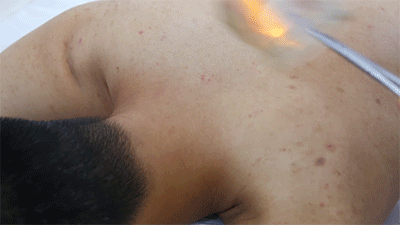 ❸ Retain the cup.
❸ Retain the cup.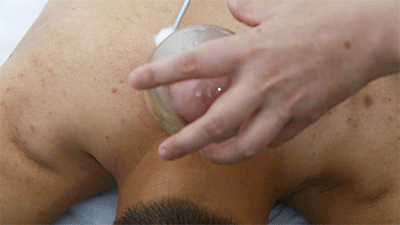 ❹ Remove the cup and wipe away the blood that flows out with a cotton ball.Cupping therapy has effects such as promoting meridian circulation, invigorating qi and blood, reducing swelling and pain, and dispelling wind and cold. The cup marks left on the body represent various health issues. Let’s explore the “Diagnosis through Cup Marks” together.Diagnosis through Cup Marks
❹ Remove the cup and wipe away the blood that flows out with a cotton ball.Cupping therapy has effects such as promoting meridian circulation, invigorating qi and blood, reducing swelling and pain, and dispelling wind and cold. The cup marks left on the body represent various health issues. Let’s explore the “Diagnosis through Cup Marks” together.Diagnosis through Cup Marks
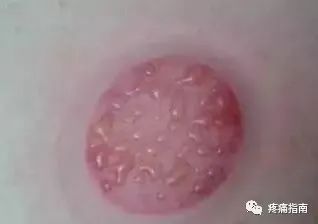
When cup marks show water vapor, blisters, or edema, it indicates that the patient has excess dampness, coldness, or has been affected by cold and dampness;
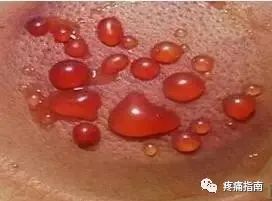
When cup marks appear as blood-red or dark red blisters, it indicates a pathological reaction of long-term dampness combined with blood stasis;
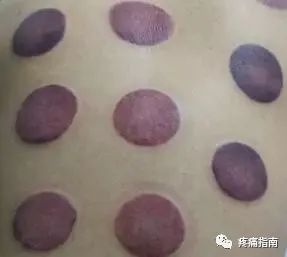
When cup marks are purple-red or purple-black, without stasis or fever, it indicates that the patient has cold combined with blood stasis, with varying severity;
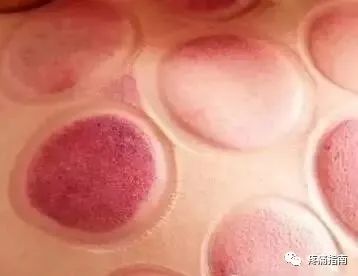
When cup marks are purple-red or purple-black, or if there are signs of stasis, slight pain upon touch, and body heat, it indicates that the patient has heat toxin syndrome;
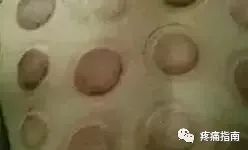
When cup marks are slightly itchy or show skin patterns, it indicates that the patient has wind syndrome;
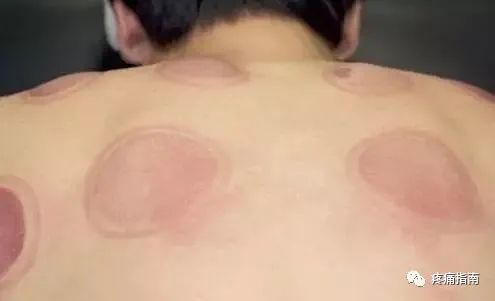
When cup marks show no color change and feel cool to the touch, it indicates that the patient has deficiency-cold syndrome.
If there are no cup marks or if the cup marks disappear and return to normal color immediately after cupping, it indicates that the body is in a relatively healthy state.
If the marks do not fade after a few days, it indicates that the condition has been present for a long time and requires more attention to treatment and care. As the condition improves, the cup marks will also fade, indicating recovery.
Indications, Main Points, and Contraindications for Cupping
1. Indications and Main Points:
Respiratory System Indications
Acute and chronic bronchitis, asthma, pulmonary edema, pneumonia, pleuritis. Main points: Dà Zhù (Da Zhu), Fēng Mén (Feng Men), Pèi Yǔ (Pneumothorax), Yīng Chuāng (Ying Chuang).
Digestive System Indications
Acute and chronic gastritis, gastric neuralgia, dyspepsia, hyperacidity. Main points: Gān Yǔ (Liver Shu), Pí Yǔ (Spleen Shu), Wèi Yǔ (Stomach Shu), Gé Yǔ (Ge Shu), Zhāng Mén (Zhang Men).
Acute and chronic enteritis. Main points: Pí Yǔ (Spleen Shu), Wèi Yǔ (Stomach Shu), Dà Cháng Yǔ (Large Intestine Shu), Tiān Shù (Tian Shu).
Circulatory System Indications
Hypertension. Main points: Gān Yǔ (Liver Shu), Dǎn Yǔ (Gallbladder Shu), Pí Yǔ (Spleen Shu), Shèn Yǔ (Kidney Shu), Wěi Zhōng (Weizhong), Chéng Shān (Chengshan), Zú Sān Lǐ (Zu San Li). Focus on the back and lower limbs.
Arrhythmia. Main points: Xīn Yǔ (Heart Shu), Shèn Yǔ (Kidney Shu), Gé Yǔ (Ge Shu), Pí Yǔ (Spleen Shu).
Insufficient blood supply to the heart. Main points: Xīn Yǔ (Heart Shu), Gé Yǔ (Ge Shu), Gāo Huāng Yǔ (Gao Huang Shu), Zhāng Mén (Zhang Men).
(Not sure where to place the needles? Follow the “Meridian Techniques” public account, click on the acupoint query, or input any acupoint in the public account to find it!)
Musculoskeletal System Indications
Cervical joint pain, shoulder joint and scapular pain, elbow joint pain. Main points: Pain points and surrounding joints for cupping. Back pain, lumbar pain, sacral pain, hip pain. Main points: Cupping based on the location of pain and surrounding joints. Knee pain, hip pain, heel pain. Main points: Use small glass cups for cupping at the site of pain and surrounding joints.
Nervous System Indications
Neurogenic headache, occipital neuralgia. Main points: Dà Zhu (Da Zhu), Dà Zhù (Da Zhu), Tiān Zhù (Tian Zhu, with face cushion), Zhì Yáng (Zhi Yang).
Intercostal neuralgia. Main points: Zhāng Mén (Zhang Men), Qī Mén (Qi Men), and cupping in the intercostal pain area.
Sciatica. Main points: Zhì Biān (Zhi Bian), Huán Tiào (Huan Tiao), Wěi Zhōng (Weizhong).
Peripheral nerve paralysis due to rheumatic damage. Main points: Dà Zhu (Da Zhu), Gāo Máng Yǔ (Gao Mang Shu), Shèn Yǔ (Kidney Shu), Fēng Shì (Feng Shi), and the affected area.
Cervical muscle spasm. Main points: Shǒu Jǐng (Shoulder Well), Dà Zhu (Da Zhu), Shǒu Zhōng Yǔ (Shoulder Middle Shu), Shēn Zhù (Shen Zhu).
Gastrocnemius muscle spasm. Main points: Wěi Zhōng (Weizhong), Chéng Shān (Chengshan), and the affected gastrocnemius area.
Facial nerve spasm. Main points: Xià Guān (Xia Guan), Yìn Táng (Yin Tang), Jiá Chē (Jia Che), using small cups, only leave the cup for 6 seconds, then remove it, and repeat cupping 10 to 20 times.
Diaphragmatic spasm. Main points: Gé Yǔ (Ge Shu), Jīng Mén (Jing Men).
Gynecological Indications
Dysmenorrhea. Main points: Guān Yuán (Guanyuan), Xuè Hǎi (Xuehai), À Shì Xuè (Asi Xue).
Amenorrhea. Main points: Guān Yuán (Guanyuan), Shèn Yǔ (Kidney Shu).
Menorrhagia. Main points: Guān Yuán (Guanyuan), Zǐ Gōng (Zigong).
Leukorrhea. Main points: Guān Yuán (Guanyuan), Zǐ Gōng (Zigong), Sān Yīn Jiāo (San Yin Jiao).
Pelvic inflammatory disease. Main points: Zhì Biān (Zhi Bian), Yāo Yǔ (Yao Shu), Guān Yuán Yǔ (Guanyuan Shu).
Indications for Surgical Wounds and Ulcers
Boils. Main points: Shēn Zhù (Shen Zhu), and the site of the boil, using small cups with face pads for cupping.
Multiple folliculitis. Main points: Zhì Yáng (Zhi Yang), local small cups with face pads for cupping.
Lower limb ulcers. Main points: Local small cups with face pads for cupping.
Acute mastitis. Main points: After applying a hot towel soaked in warm water to the area, use medium or large cups for cupping, which can be repeated 5 to 6 times.
2. Contraindications for Cupping
High fever, convulsions, spasms; skin allergies or ulcerated areas; areas with thin muscles or uneven bones and areas with excessive hair should not be treated; pregnant women should be cautious with cupping on the lumbar and abdominal areas.
3. Cupping Precautions
1. Do not take a cold shower or drink cold beverages within two hours after guasha and cupping; if taking a shower after two hours, use warm water.
2. During guasha and cupping, do not use air conditioning or fans to avoid air convection.
3. Do not perform cupping when overly full, hungry, or after drinking; wait at least one hour after meals before performing guasha or cupping.

